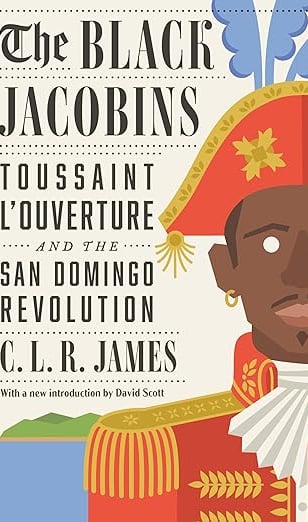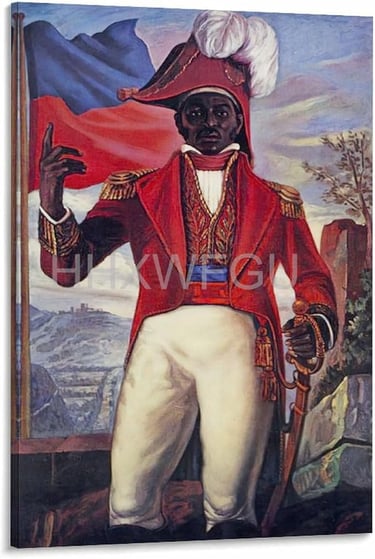Haiti’s Fight for Freedom
Uncover the powerful history of the Haitian Revolution, where enslaved Africans fought for their freedom against colonial forces. Learn about Toussaint Louverture’s rise as a leader, the pivotal Battle of Vertières, and how Haiti became the first independent Black republic, inspiring movements for freedom across the Americas. This story of resilience and courage highlights the high cost of liberty and the enduring legacy of those who fought to change history.
HISTORICAL FIGURESWARS AND BATTLESEMPIRES AND DYNASTIES
Michael Keller
12/23/202415 min read
Haiti’s Fight for Freedom
“We must, with one last effort, drive the French from our territory. Let us show them that we are worthy of being free, that we are worthy of being called men.” - Jean-Jacques Dessalines [1]
A Night of Fire and Faith
The night was alive with an electric tension, thick as the humid air hanging in the forests of Saint-Domingue. It was August 14, 1791, a night that would soon burn its way into history. Hidden beneath a canopy of towering trees, a congregation of enslaved Africans; men, women, and children, had gathered in secret at a place now etched into legend: Bois Caïman. [2]
The rhythmic pounding of drums rose like a pulse, deep and ancient, a heartbeat that connected them to their ancestors. The flames of torches flickered wildly, casting long shadows that danced across determined faces, faces that had borne generations of suffering.
At the heart of this assembly stood Boukman Dutty. He was no ordinary man; his very presence carried the weight of defiance. A leader of the enslaved, a houngan, (Vodou priest). Boukman’s name already carried whispers of power among the oppressed. Tall and formidable, with eyes that seemed to pierce the darkness, he commanded the crowd’s attention as the drumbeats slowed. All sound hushed save for the crackle of fire. [3]
Boukman’s voice thundered into the night, both a plea and a proclamation. Though his exact words are lost to history, the spirit of his message was clear: the time for liberation had come. The crowd listened, their breath shallow, hearts pounding as Boukman called on their shared gods, Ogou, the god of war, and Ezili Dantor, the protector of the oppressed. He urged unity, promising that freedom was within their grasp, but they would need to swear an unbreakable oath.
The oaths were spoken, likely over the blood of a sacrificed animal, its life offered as a symbol of their resolve. Those gathered swore not merely revenge, but a sacred duty to their ancestors, their children, and each other.
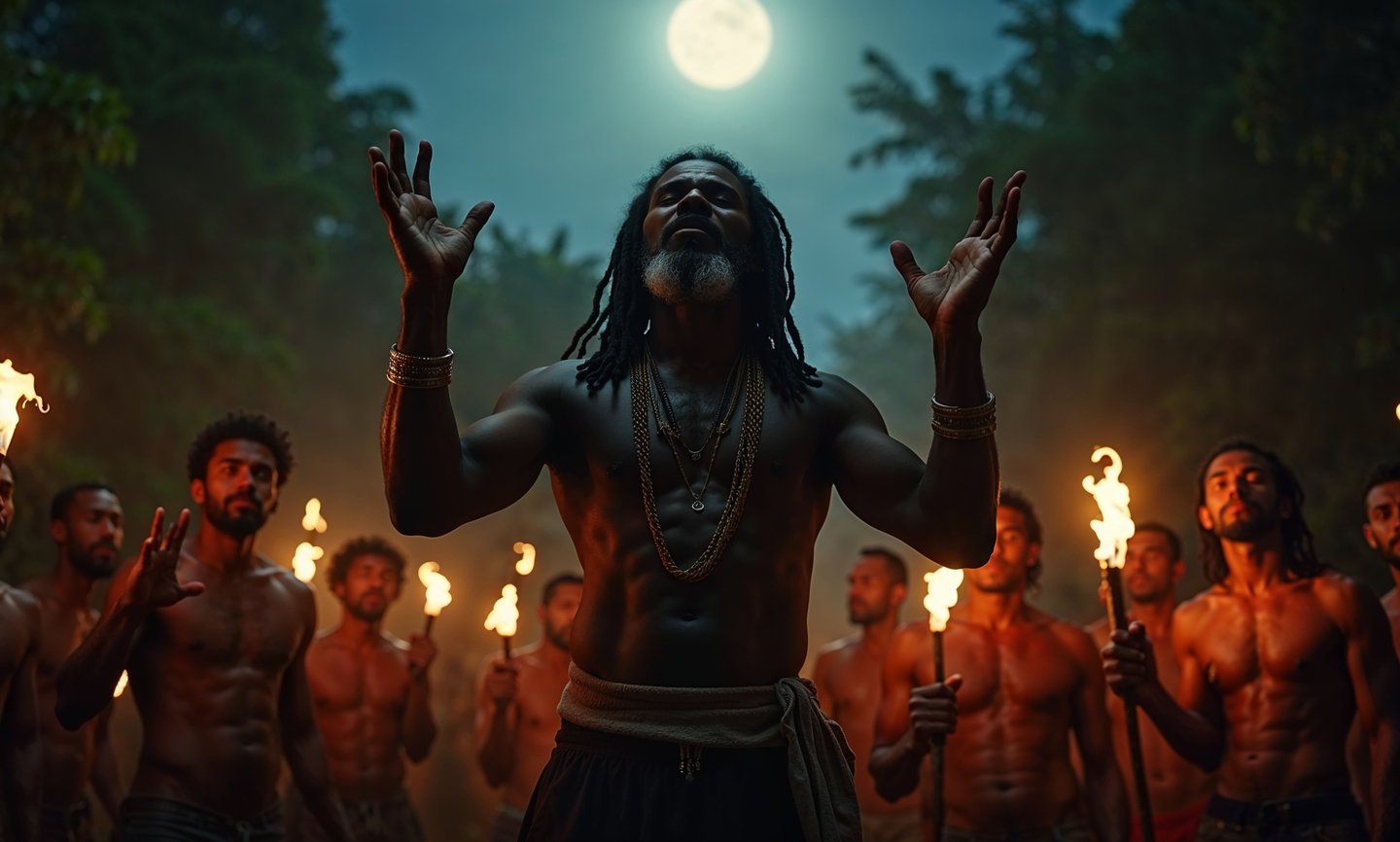

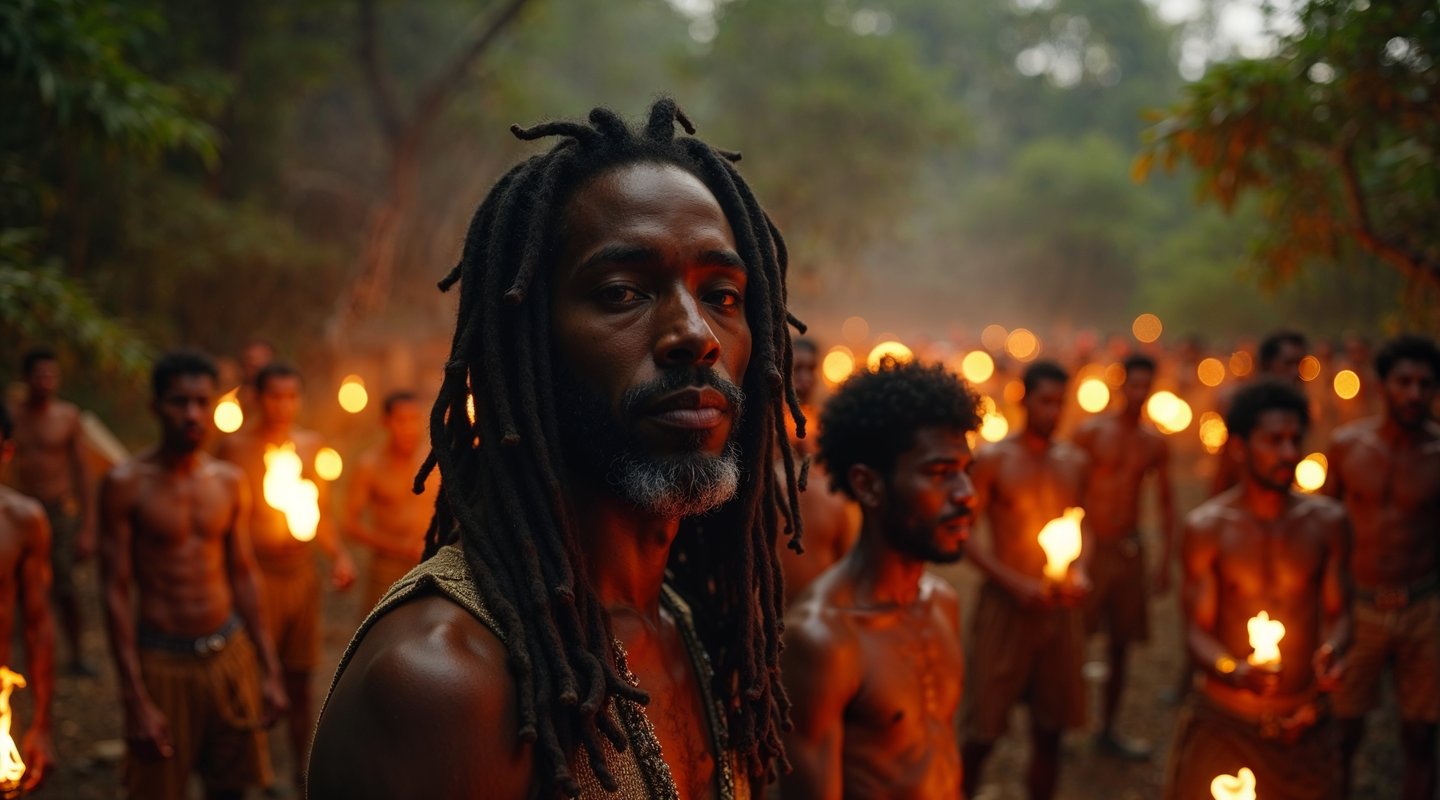

A Colony Built on Suffering
Saint-Domingue was the crown jewel of the French Empire. Sugar, coffee, tobacco, these were the treasures that made it the richest colony in the Caribbean. [4] But the wealth of the colony came at an unbearable cost. The plantation fields stretched endlessly beneath the scorching sun, worked by the sweat of the enslaved. Men, women, and children toiled day after day, their lives consumed by the relentless demands of the land.
They were treated as little more than tools, objects to be used and discarded at will. Whips cracked across their backs, and their bones ached with the burden of unending labor. The life expectancy for the enslaved was brutal, just seven years. [5] Seven years to endure the heat, the violence, and the crushing weight of oppression.
Yet in the midst of this suffering, the enslaved carried more than just their pain. They carried memories of a distant homeland, of songs passed down through generations, of the hope that one day, they would be free. The stories of resistance, of rebellion, lived on in whispered conversations and secret meetings. Even in the darkest corners of Saint-Domingue, there was an unshakable will to resist.
The French may have basked in the riches their colony provided, but they were blind to the simmering storm beneath their feet. They didn't see the growing rage, the unity forming among the enslaved, or the leaders emerging in the shadows, ready to strike. When it finally came, the revolution wasn't just inevitable, it was unstoppable.
The Battle of Vertières
By 1803, the Haitian revolution had reached its boiling point. Toussaint Louverture, the man who had sparked the flames of rebellion, was gone, captured and taken to France, where he would perish in a cold, forgotten prison cell. [14] But Toussaint’s dream of a free Haiti didn’t die with him. It lived in the heart of Jean-Jacques Dessalines, his fiercest lieutenant. Dessalines, a man of unshakable resolve, took up the mantle of leadership, rallying his people with a single-minded purpose: victory at all costs.
The final showdown was near. Napoleon, desperate to hold onto his empire's glory, sent what was left of his forces to crush the Haitian revolution once and for all. The French army, seasoned and equipped with the finest weaponry, thought the battle was already won. But they hadn't counted on the relentless spirit of the Haitian people, their hunger for freedom, their will to survive, and their undying loyalty to the cause.
On November 18, 1803, the battle that would decide the fate of Haiti unfolded at a place called Vertières. [15] The land, soaked in the blood of countless battles before, would become the site of a victory that would echo across history.
The French army, under the command of General Rochambeau, had dug in, expecting an easy fight. But Dessalines, relentless and unstoppable, had no intention of retreating. His soldiers, ragged, hungry, and outgunned, were ready. They fought with everything they had: men who had known nothing but struggle and hardship, but who now had one thing to live for, freedom. [16]
As the first cannons roared, the air trembled with the sound of gunfire. The earth beneath their feet shook with the thunder of war. The Haitians were fierce and relentless, moving with the precision of men who had been fighting for their lives for years. Musket fire echoed through the hills, the sharp crack of gunshots mingling with the guttural cries of combat. In the chaos, soldiers fought hand-to-hand, their bodies caked in mud, blood, and sweat.
The French, trained and disciplined, fought hard, but the Haitians had something they could never match: the will to be free. It wasn’t just a battle of weapons, it was a battle of hearts, and Dessalines knew this better than anyone. He commanded his men with a fire that drove them forward, no matter the cost. They fought with the land as their ally, using the terrain to their advantage, moving in ways the French never expected.
As the day wore on, the tide began to turn. The Haitians, though fewer in number, were relentless, pushing the French back with each charge. The sound of cannons grew faint as the smoke of battle thickened, clouding their vision. The French, stunned and disoriented, began to falter. It wasn’t just their enemy’s strength that defeated them, it was the very land they had tried to conquer. The Haitian revolutionaries knew their land, every hill, every forest, every rock, and they used it to their advantage.
And then, the smoke finally cleared.
The French forces, broken and battered, lay in retreat. [17] The battle was over. The revolutionaries won.
Dessalines, standing tall in the midst of it all, had led his people to victory. The French had been defeated. Haiti would not be a colony anymore; it would not be a land of slavery. The dream of Toussaint Louverture, of a free Haiti, had come true.
In the wake of the battle, as the sun set on the blood-soaked fields of Vertières, one thing was undeniable: Haiti had triumphed.
Freedom at Last
Just weeks later, on January 1, 1804, Dessalines stood before his people, his brothers and sisters in arms and declared Haiti’s independence. [18] The day was a turning point, not just for Haiti, but for the world. The name “Saint-Domingue” was cast aside, a symbol of colonial subjugation, and the land was reborn as Haiti, a name that meant “land of mountains”, a fitting tribute to the rugged terrain that had helped them defeat the might of the French empire.
Haiti was now the first independent Black nation in the Western Hemisphere. A nation forged in the blood and sweat of the enslaved stood as a beacon of hope for oppressed people everywhere. It was also the first successful slave revolt in modern history, a victory that sent shockwaves through the colonial powers, shaking the very foundations of empires built on exploitation and domination. Haiti had proven that a people enslaved could rise up and overthrow the mightiest of empires, that freedom could be fought for and won, no matter the odds.
Haiti’s independence was a triumph like no other, a reminder that even the greatest forces of oppression can be overcome when the will of the people is strong enough. And though the road ahead would be long and fraught with challenges, on that day, Haiti had written its own future, and no one could take that away.
The Black Jacobins by C. L. R. James is a powerful account of the Haitian Revolution, the uprising ignited by the French Revolution that became a model for liberation movements across the world.
The story unfolds in the French colony of Saint-Domingue, where the brutality of plantation owners toward the enslaved was unimaginable. At the heart of the revolution is Toussaint L’Ouverture, a charismatic and largely illiterate enslaved man who rose to lead the Black people in their fight for freedom. Against overwhelming odds, he successfully resisted French, Spanish, and English forces, ultimately helping to create Haiti, the first independent post-colonial nation in the Caribbean. This is a gripping story of resistance, courage, and the struggle for freedom.
The Rise of Toussaint Louverture
The Haitian Revolution was not just born in the flames of rebellion, it was sharpened in the heat of battle. And at the heart of that revolution stood Toussaint Louverture, a man who would come to embody the struggle itself. Born into slavery, Toussaint’s life could have easily been one of suffering and silence. But he was not bound by the chains that held him.
Toussaint was a man of striking contradictions. On the one hand, he was humble, a former field slave who had worked the land like so many others. But on the other, he had an aura that demanded attention. He was quiet yet commanding, compassionate yet ruthless when necessary. Most astonishing of all, he could read and write, a rarity among the enslaved, a skill that set him apart and made him an invaluable asset to the revolution. [6]
When the revolution ignited into violent uprisings, it was Toussaint who rose to lead. At a time when many of his fellow revolutionaries were still learning the basics of combat, Toussaint was already transforming his army into a formidable force. He trained men who had never touched a weapon, turning them into soldiers who could outfight and outthink the finest European armies. His strategy was brilliant, unpredictable, and relentless.
In the chaos of battle, Toussaint’s name became both a threat and a promise, fearsome, yet filled with the hope of victory. “I am Toussaint Louverture; perhaps my name has made some noise. If the blacks of Saint-Domingue have risen against their oppressors, it is not I who have incited them; but if I have taken part in their struggle, it is because I have seen that they were fighting for their rights, and that their enemies were the enemies of the Republic." he said, undeterred by those who believed him to be nothing more than a former slave, an afterthought in the grand scheme of empires. [7]
But Toussaint was more than just a soldier. He was a tactician, a brilliant strategist who made the French generals tear their hair out in frustration. He knew when to strike and when to wait, when to show mercy and when to deliver swift retribution. Under his command, the revolution’s army didn’t just survive, it thrived. He was the guiding force, the soul of the movement, and his leadership would be the key to Haiti’s independence.
Napoleon’s Gambit
When Napoleon Bonaparte seized power in France, his ambitions knew no bounds. He dreamed of rebuilding France into a global empire, with Saint-Domingue as its jewel, the crown jewel of the Caribbean, and a source of unimaginable wealth. The wealth of Saint-Domingue was built on sugar, coffee, and rum, and Napoleon, ever the opportunist, saw it as a key to his vision of greatness. In 1802, he made a bold move to crush the Haitian rebellion and reclaim his colony. He sent an armada of 40,000 troops, led by his brother-in-law, General Charles Leclerc, to do what the French could not, restore order, restore control, and above all, restore slavery. [8]
Napoleon believed the task would be simple. After all, the French were the world’s greatest military power, and Haiti, despite its valiant resistance, was still a colony of enslaved people.[9] What Napoleon didn’t account for, however, was the strength of the Haitian revolutionaries, nor the fierce will to fight for freedom that ran through their veins. The French soldiers landed in Saint-Domingue expecting an easy victory, only to find themselves face-to-face with an army of Black and mulatto revolutionaries who were willing to fight to the death to preserve their hard-won freedom.
Among these revolutionaries was Jean-Jacques Dessalines, Toussaint Louverture’s fierce and loyal lieutenant, whose tactical brilliance rivaled that of his former leader. [10] Dessalines was a man driven by the injustice he had suffered, and now, as the French came to crush the revolution, he became the heart of the resistance, leading with unmatched fury and resolve. And alongside him was Marie-Jeanne Lamartinière, a woman whose courage and determination knew no bounds. She fought on the frontlines with the same bravery as any man, rifle in hand, her resolve as unshakable as the land she fought to protect. [11]
Their tactics were ruthless and cunning. The Haitian forces struck swiftly and disappeared into the forests, using the dense terrain to their advantage, making it impossible for the French to pin them down. The revolutionaries understood their land better than anyone, they knew every hidden path, every shadowed ravine, every twist and turn of the forest. They used this to outmaneuver the French, turning the very land itself into a weapon.
But the real turning point for the French came from an unexpected source: yellow fever. [12] The disease swept through the French ranks like wildfire, decimating their soldiers faster than the Haitian army could. Thousands fell victim to the fever, including General Leclerc himself, who succumbed to the very disease that would eventually turn the tide of the war. [13] It wasn’t just the fierce resistance of the Haitian fighters that was defeating Napoleon’s great army, it was the land, the climate, and the disease, all conspiring against the French invaders.
Napoleon’s dream of reasserting control over Saint-Domingue was crumbling. The army he had sent to crush the revolution was being undone not only by the Haitian revolutionaries’ resolve and cunning but by nature itself. The French, once the mightiest empire on Earth, were being struck down by an invisible enemy that knew no borders.
What do you think of Haiti’s incredible fight for freedom?
Share your thoughts with us. For feedback or inquiries, email: contact@archivinghistory.com. We look forward to hearing from you!
Join Archiving History as we journey through time! Want to stay-tuned for our next thrilling post? Subscribe!
Follow us on Facebook, Instagram, YouTube and TikTok for captivating insights, engaging content, and a deeper dive into the fascinating world of history.
Source(s):
1. James, C. L. R. The Black Jacobins: Toussaint L’Ouverture and the San Domingo Revolution. New York: Vintage Books, 2001, 179.
2. Dubois, Laurent. Avengers of the New World: The Story of the Haitian Revolution. Cambridge, MA: Harvard University Press, 2004, 49-50.
3. Fick, Carolyn E. The Making of Haiti: The Politics of Revolution. Knoxville: University of Tennessee Press, 1990, 19-21.
4. Mintz, Sidney W. Caribbean Transformations. Chicago: Aldine Publishing Company, 1974, 125.
5. Geggus, David Patrick. Slavery, War, and Revolution: The British Occupation of Saint-Domingue, 1793-1798. Oxford: Clarendon Press, 1982, 10.
6. James, C. L. R. The Black Jacobins: Toussaint L’Ouverture and the San Domingo Revolution. New York: Vintage Books, 2001, 128-130.
7. Fick, Carolyn E. The Making of Haiti: The Politics of Revolution. Knoxville: University of Tennessee Press, 1990, 58.
8. James, C. L. R. The Black Jacobins: Toussaint L'Ouverture and the San Domingo Revolution. New York: Vintage Books, 1989, 98–99.
9. Dubois, Laurent. Avengers of the New World: The Story of the Haitian Revolution. Cambridge, MA: Harvard University Press, 2004, 212–213.
10. Gérard, Michel. Jean-Jacques Dessalines: The Life and Legacy of the Haitian Revolutionary Leader. New York: Monthly Review Press, 2011, 103.
11. Madiou, Thomas. Histoire d'Haiti. Port-au-Prince: Imprimerie de la Société, 1847, 201–202.
12. Eltis, David. "The Haitian Revolution and the End of Slavery in the Atlantic World." In The Cambridge History of Slavery, Vol. 4, edited by David Eltis and Stanley Engerman, 215–239. Cambridge: Cambridge University Press, 2011, 220.
13. Roberts, Peter. "Leclerc, Charles." Encyclopedia of the Haitian Revolution, edited by David Patrick Geggus and Norman Fiering, 189–191. Westport, CT: Greenwood Press, 2006, 190.
14, Wenzel, Isabelle. "The Last Years of Toussaint Louverture." Haitian Studies Review 15, no. 2 (2015): 140–142.
15. Trouillot, Michel-Rolph. Silencing the Past: Power and the Production of History. Boston: Beacon Press, 1995, 128.
16. Dubois, Laurent. Avengers of the New World: The Story of the Haitian Revolution. Cambridge, MA: Harvard University Press, 2004, 220–222.
17. James, C. L. R. The Black Jacobins: Toussaint L'Ouverture and the San Domingo Revolution. New York: Vintage Books, 1989, 334–336.
18. Dubois, Laurent. Avengers of the New World: The Story of the Haitian Revolution. Harvard University Press, 2004, 215.
19. Trouillot, Michel-Rolph. Silencing the Past: Power and the Production of History. Beacon Press, 1995, 113.
20. eggus, David Patrick. Haitian Revolutionary Studies. Indiana University Press, 2002, 89.
21. Fick, Carolyn E. The Making of Haiti: The Origins of the Republic. University of the West Indies Press, 1990, 276.
22. Palmie, Stephen. The Afro-Latin@ Reader: History and Culture in the United States. Duke University Press, 2010, 157.
23. Sherrill, John. The Haitian Revolution and Its Impact on the Americas. University of North Carolina Press, 1991, 122.
24. Pétion, Joseph. Jean-Jacques Dessalines: The Revolutionary Hero of Haiti. University of Florida Press, 2003, 105.
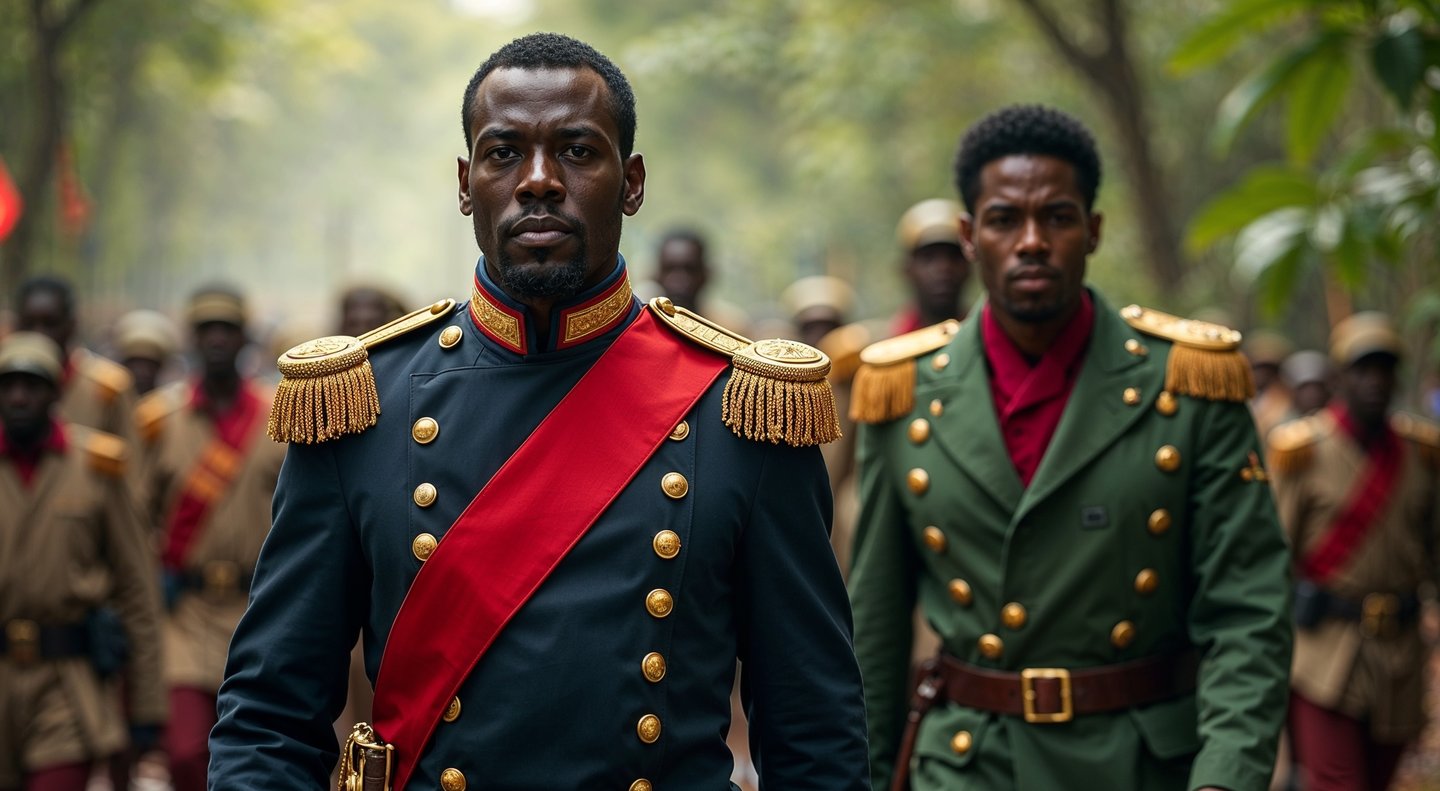

Scenery canvas home art painting
The Black Jacobins by C. L. R. James is a powerful account of the Haitian Revolution, the uprising ignited by the French Revolution that became a model for liberation movements across the world.
The story unfolds in the French colony of Saint-Domingue, where the brutality of plantation owners toward the enslaved was unimaginable. At the heart of the revolution is Toussaint L’Ouverture, a charismatic and largely illiterate enslaved man who rose to lead the Black people in their fight for freedom. Against overwhelming odds, he successfully resisted French, Spanish, and English forces, ultimately helping to create Haiti, the first independent post-colonial nation in the Caribbean. This is a gripping story of resistance, courage, and the struggle for freedom.
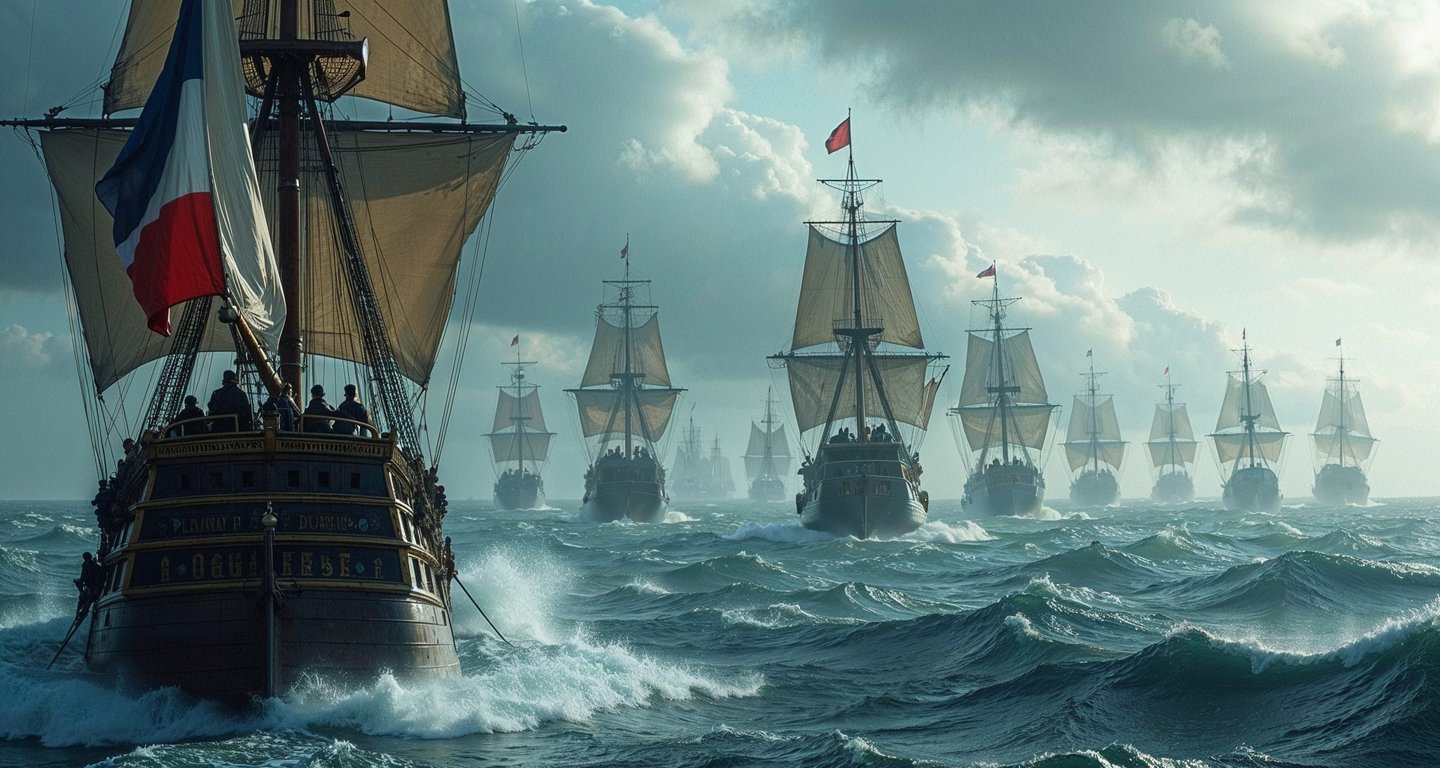

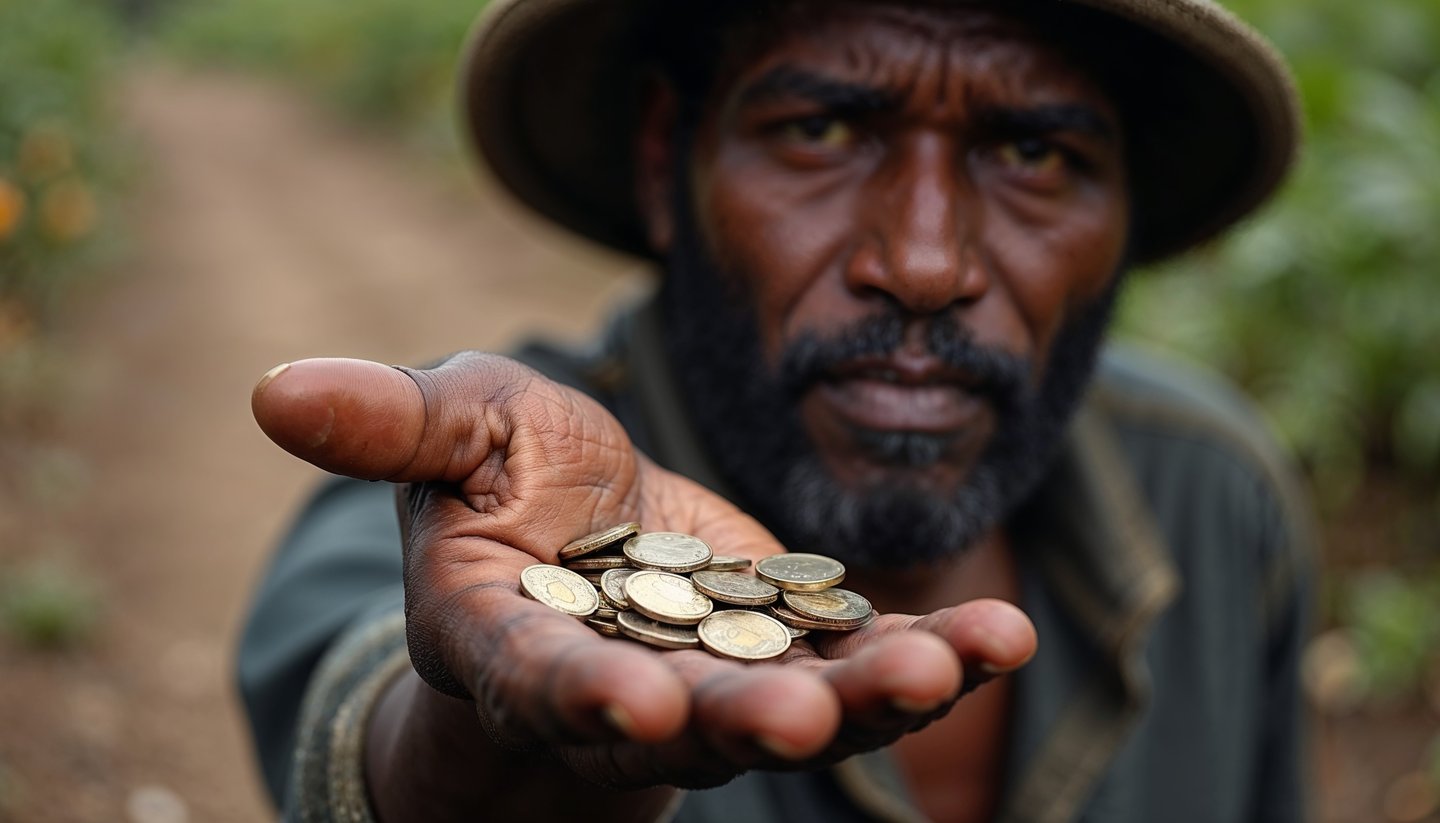

The Cost of Freedom
Freedom, like all great victories, came at a heavy cost. The revolution that tore Saint-Domingue apart left scars that would never fully heal. [19] As the French forces retreated, they didn’t go quietly. They razed villages, slaughtered the innocent, and scorched the earth. [20] The land that had fought so hard for its freedom was now a witness to cruelty, an untold chapter of suffering for the people of Haiti. But despite the horrors they endured, the revolutionaries refused to bow.
Even after victory was claimed on the battlefield, Haiti was far from free. The price of recognition from France was steep, an unimaginable debt, a burden placed on the shoulders of the new nation. France demanded a sum that crippled the fledgling republic, forcing the Haitians to pay for their own freedom. [21] The rest of the world, perhaps too afraid of the storm Haiti had unleashed, turned its back on them. Nations that had once traded in human lives now shunned the newly independent Haiti, afraid of what it represented. [22]
But Haiti's spirit couldn’t be crushed.
The revolution’s impact rippled far beyond the shores of the Caribbean. It didn’t just change the course of history for one small island nation, it set the entire world on notice. Haiti’s fight for freedom inspired the oppressed everywhere. It sent a clear message across the Americas: freedom is not a gift, it is a battle, a war that must be fought and won, no matter the cost.
The enslaved, once silenced and shackled, became soldiers, charging forward with the might of their resolve. They became more than warriors, they became symbols of defiance, of what it meant to take back control, to fight for the very breath of life itself. They weren’t just fighting for land, they were fighting for humanity, for the right to be free.
And as the battle raged on, those soldiers became heroes. They were the men and women who stood at the crossroads of history, who gave everything for a dream that had been denied for so long. These heroes, Dessalines, Pétion, Christophe, and others, would be etched into the annals of history, their names whispered in awe for generations to come. [23]
In the end, Haiti became something more than just a nation. It became a beacon of hope, a testament to the power of the human will to rise above even the most impossible odds. The revolution created not just a free country, but a living, breathing symbol of what happens when people, no matter their circumstances, refuse to accept anything less than liberty. And that legacy, forged in the fire of rebellion, is as enduring as the mountains of Haiti itself.
The Immortal Words
The story of the Haitian Revolution is more than history, it’s a testament to the power of the human spirit. As Jean-Jacques Dessalines urged his people:
“Let us show them that we are worthy of being free.” [24]
And they did.



